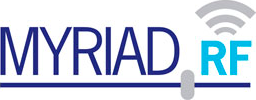Do you mean RX only, TX only or an actual RX+TX ?
RX only should work for some or part of the current 802.11 protocols:
802.11-1997 freq: 2.4GHz bandwidth: 22MHz
802.11a freq: 3.7GHz(US only),5GHz bandwidth: 20 MHz
802.11b freq: 2.4GHz bandwidth: 22MHz
802.11g freq: 2.4GHz bandwidth: 20MHz
802.11n freq: 2.4GHz,5GHz bandwidth: 20/40 MHz MIMO: up to 4
802.11ac freq: 5GHz bandwidth: 20/40/80/160MHz MIMO: up to 8
802.11af freq: 54-790MHz bandwidth: 6/8MHz MIMO: up to 4
802.11ad freq: 60GHz bandwidth: 2160 MHz
802.11ah freq: 900MHz bandwidth 1-16MHz MIMO: up to 4
(ref: https://en.wikipedia.org/wiki/IEEE_802.11#Protocol )
So on paper the following should be possible - 1997, a(3.7GHz only),b,g n(MIMO 2* and below), n(2.4GHz only and MIMO 2* and below), af(MIMO 2* and below) ah(MIMO 2* and below)
- provided that all MIMO channels are within the same 61.44MHz.
TX only would be the restricted to the same 802.11 protocols as RX.
e.g. Wifi signal generator and analyzer application
RX+TX to meet the timing requirements of WiFi protocols would require that the physical layer is implemented inside the LimeSDR on the FPGA, which would be complex and might not be possible (depending on space). The reason is that USB 3.0 has an average latency of 30 μs (one way), so you would double that and allow time for actually processing the data on the host which is going to be way way longer than the WiFi protocol timeout.
The reality is that using multiple WiFi cards in promiscuous mode would be easier for most things, and require much lower processing power on the host computer.
